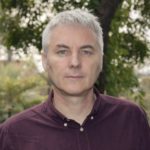Link to Pubmed [PMID] – 32407380
Link to DOI – 10.1371/journal.pmed.1003084
PLoS Med. 2020 05; 17(5): e1003084
The radical cure of Plasmodium vivax and P. ovale requires treatment with primaquine or tafenoquine to clear dormant liver stages. Either drug can induce haemolysis in individuals with glucose-6-phosphate dehydrogenase (G6PD) deficiency, necessitating screening. The reference diagnostic method for G6PD activity is ultraviolet (UV) spectrophotometry; however, a universal G6PD activity threshold above which these drugs can be safely administered is not yet defined. Our study aimed to quantify assay-based variation in G6PD spectrophotometry and to explore the diagnostic implications of applying a universal threshold.Individual-level data were pooled from studies that used G6PD spectrophotometry. Studies were identified via PubMed search (25 April 2018) and unpublished contributions from contacted authors (PROSPERO: CRD42019121414). Studies were excluded if they assessed only individuals with known haematological conditions, were family studies, or had insufficient details. Studies of malaria patients were included but analysed separately. Included studies were assessed for risk of bias using an adapted form of the Quality Assessment of Diagnostic Accuracy Studies-2 (QUADAS-2) tool. Repeatability and intra- and interlaboratory variability in G6PD activity measurements were compared between studies and pooled across the dataset. A universal threshold for G6PD deficiency was derived, and its diagnostic performance was compared to site-specific thresholds. Study participants (n = 15,811) were aged between 0 and 86 years, and 44.4% (7,083) were women. Median (range) activity of G6PD normal (G6PDn) control samples was 10.0 U/g Hb (6.3-14.0) for the Trinity assay and 8.3 U/g Hb (6.8-15.6) for the Randox assay. G6PD activity distributions varied significantly between studies. For the 13 studies that used the Trinity assay, the adjusted male median (AMM; a standardised metric of 100% G6PD activity) varied from 5.7 to 12.6 U/g Hb (p < 0.001). Assay precision varied between laboratories, as assessed by variance in control measurements (from 0.1 to 1.5 U/g Hb; p < 0.001) and study-wise mean coefficient of variation (CV) of replicate measures (from 1.6% to 14.9%; p < 0.001). A universal threshold of 100% G6PD activity was defined as 9.4 U/g Hb, yielding diagnostic thresholds of 6.6 U/g Hb (70% activity) and 2.8 U/g Hb (30% activity). These thresholds diagnosed individuals with less than 30% G6PD activity with study-wise sensitivity from 89% (95% CI: 81%-94%) to 100% (95% CI: 96%-100%) and specificity from 96% (95% CI: 89%-99%) to 100% (100%-100%). However, when considering intermediate deficiency (<70% G6PD activity), sensitivity fell to a minimum of 64% (95% CI: 52%-75%) and specificity to 35% (95% CI: 24%-46%). Our ability to identify underlying factors associated with study-level heterogeneity was limited by the lack of availability of covariate data and diverse study contexts and methodologies.Our findings indicate that there is substantial variation in G6PD measurements by spectrophotometry between sites. This is likely due to variability in laboratory methods, with possible contribution of unmeasured population factors. While an assay-specific, universal quantitative threshold offers robust diagnosis at the 30% level, inter-study variability impedes performance of universal thresholds at the 70% level. Caution is advised in comparing findings based on absolute G6PD activity measurements across studies. Novel handheld quantitative G6PD diagnostics may allow greater standardisation in the future.

